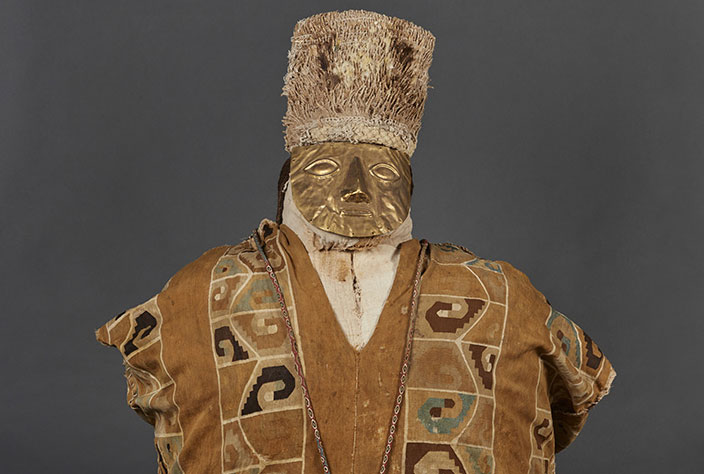Huari Funerary Bundle
Room 10, Vitrine 130
Human remains and textiles
Highlands of southern Peru
Fusion Epoch (800 AD – 1300 AD)
ML800001
This funerary bundle clothed in finery and a funerary mask contains the body of a child, wrapped in cloth. As occurred in ancient Egypt, the dead were carefully prepared for their journey into the underworld.
- For the people of the Andes, death was not the end of life. It marked the transition into a new existence in the underworld.
- This transition was ensured through funerary rites and the careful preparation of the funerary bundle and tomb, so that society’s leaders could be transformed into ancestors.
- In those societies which achieved a state or imperial power structure, such as the Chimú and Inca, leaders were seen as direct descendants or “children” of the gods, and when they died their return to the celestial world had to be ensured.
- In this funerary bundle, the body has been wrapped in plain cotton cloth to form a bundle which is adorned with emblems of power, indicating the social position of the deceased individual and his divine lineage.
- The fine tunic, or unku, worn by the bundle was woven with the step and spiral motifs seen so often in pre-Columbian art, symbolizing the meeting of different worlds.
- The bundle’s head is covered with a metal funerary mask; a feather headdress symbolizes the connection with the celestial world; the braids of human hair interwoven with different colored wools create the step and spiral motif, symbolic of life’s continuity.
- Finally, the ancestor has been wrapped in an array of symbols which indicate his political status, ethnic identity and lineage.
